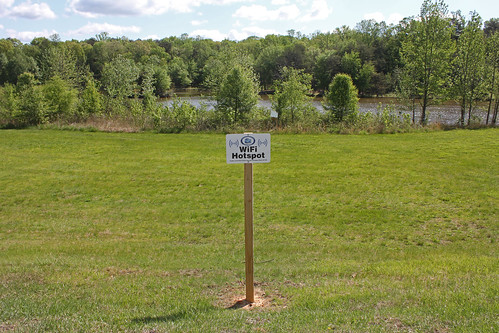
Nothing remotely related to SXSW was going on in the building today
I began the last day of the Interactive festival in just the way that anyone trying to leave their law career behind would like to begin it. By going to court.
I also had a rather inauspicious beginning to the day due to an unfortunate goof. Since I spent the weekend at a sleepover of sorts, I had not had an opportunity to “spring forward” with any of the clocks at home. When I got home last night, tired from a day of learning and growing as a person, the time change of the previous day was the farthest thing from my mind.
When my alarm clock went off at 7:00 a.m., affording me a whole two hours to wake up, shower, remember how to tie a tie, and get my butt to the courthouse, I did not realize it was actually 8:00 a.m. For once, I’m glad I have this compulsive need to wake up earlier than is strictly necessary. Rather than make it to the courthouse with around 30 minutes to spare. I arrived with around 3 extra minutes. The simple fact that I arrived on time should be cause for a damn parade, but I still don’t see any bunting.
Miraculously, I was in an out of court in record time, arriving at just short of 9:15 a.m. and adjourning just after 9:30. With the catastrophic traffic, I was parking near the Convention Center by about 10:15, and comically changing clothes in the car. Luckily, no one walked by to see the show.
Since I had just been reminded that I am a lawyer…
I got in just in time for a CLE presentation, which I decided I should attend because hey! CLE credit!
I went to two CLE sessions, which I will delve into on my law blog:
 Back to the Lounge!!!
Back to the Lounge!!!
I could tell I was burning out on panels, almost for good, as I fled the CLE room ahead of a panel on something like “Maximizing Revenues from Film.” You would think I could want to hear that, but I felt like just talking to people.
Once again, the bloggers’ lounge proved to be a great place to get free food and meet people. I met a fellow legal ghost-blogger. An interesting band called the Sweetness played, and then they kicked us out at 4:00 p.m., a couple hours earlier than on previous days.
SXSW NSFW
To cap off the conference, I headed with a friend to a session at the Sheraton Hotel. Thus involved a rather comical search for a Car2Go and a ponderous drive through absurd amounts of traffic. Our destination? A session titled “This Talk Is NSFW: Nudity and Online Journalism.” Thanks to traffic, we missed the first half, and I’m not sure I ever quite picked up the thread of the discussion.
As we walked in, the speaker, Keith Plocek, the Director of Web Content and Traffic at Village Voice Media, was showing slides of people in various states of undress and asking people to vote on whether they thought the image was “NSFW.” The issue was when a newspaper or other news source should tag an article or picture as NSFW. The general rule relates to context, but it can also be quite political. Whether or not to tag a picture, he said, largely depends on who is being sexy in the picture. Pictures that seem “gay” are much more likely to get tagged. Using the NSFW tag is a great way to get traffic, but it will get you angry comments if it’s too tame. You don’t want to deceive your readers about this issue, silly as it may seem, because that erodes your overall credibility.
He also talked about the importance of “covering” events as opposed to “pandering.” “Pandering” would be putting a naked woman somewhere and taking pictures, as opposed to covering a porn convention already in progress. He showed photos of the World Naked Bike Ride in Los Angeles from a few years ago. He said the page got about 800,000 views when they posted it, and then it leveled off. The page got even more hits the following year, in anticipation of the next ride, and now it’s up to about 2.5 million hits. Obviously, the NSFW tag gets attention.
They have to make some editorial decisions about what to cover, though, so they don’t over-use the tag. For example, they cannot cover every burlesque event in the city.
One question from the audience was about violent content. The NSFW can be used for violent content as well as sexual content. Apparently there is another tag, NSFL (“not safe for life” or “not safe for lunch”), used for particularly disturbing violent content. People tend to have certain expectations when they click on a link tagged “NSFW,” i.e. boobs. Don’t show them something really gross if they are expecting boobs.
And that’s all she wrote…
I wanted to go to the party thrown by the Electronic Frontier Foundation, but by the time I got home, I knew that is where I’d be staying.
Tomorrow, I catch up on work.
Thursday, music…





!["Internet map 1024" by The Opte Project [CC-BY-2.5 (http://creativecommons.org/licenses/by/2.5)], via Wikimedia Commons 768px-Internet_map_1024](http://crypticphilosopher.com/wp-content/uploads/2012/07/768px-Internet_map_1024.jpg)
!['Virus rezon' by DROUET (Own work) [GFDL (www.gnu.org/copyleft/fdl.html) or CC-BY-SA-3.0-2.5-2.0-1.0 (www.creativecommons.org/licenses/by-sa/3.0)], via Wikimedia Commons 463px-Virus_rezon](http://crypticphilosopher.com/wp-content/uploads/2012/07/463px-Virus_rezon-289x300.gif)
!['3D model hydrogen bonds in water,' by User Qwerter at Czech wikipedia: Qwerter. Transferred from cs.wikipedia; Transfer was stated to be made by User:sevela.p. Translated to english by by Michal Maňas (User:snek01). Vectorized by Magasjukur2 (File:3D model hydrogen bonds in water.jpg) [CC-BY-SA-3.0 (http://creativecommons.org/licenses/by-sa/3.0)], via Wikimedia Commons '3D model hydrogen bonds in water,' by User Qwerter at Czech wikipedia: Qwerter. Transferred from cs.wikipedia; Transfer was stated to be made by User:sevela.p. Translated to english by by Michal Maňas (User:snek01). Vectorized by Magasjukur2 (File:3D model hydrogen bonds in water.jpg) [CC-BY-SA-3.0 (http://creativecommons.org/licenses/by-sa/3.0)], via Wikimedia Commons](http://upload.wikimedia.org/wikipedia/commons/thumb/c/c6/3D_model_hydrogen_bonds_in_water.svg/256px-3D_model_hydrogen_bonds_in_water.svg.png)
!['Hurricane Isabel from ISS,' image courtesy of Mike Trenchard, Earth Sciences & Image Analysis Laboratory , Johnson Space Center.[see page for license], via Wikimedia Commons 'Hurricane Isabel from ISS,' image courtesy of Mike Trenchard, Earth Sciences & Image Analysis Laboratory , Johnson Space Center.[see page for license], via Wikimedia Commons](http://upload.wikimedia.org/wikipedia/commons/thumb/0/04/Hurricane_Isabel_from_ISS.jpg/512px-Hurricane_Isabel_from_ISS.jpg)

![Tasmania.A2005320.2355.250m by Jeff Schmaltz, MODIS Rapid Response Team, NASA/GSFC[see page for license], via Wikimedia Commons Tasmania.A2005320.2355.250m](http://upload.wikimedia.org/wikipedia/commons/thumb/7/72/Tasmania.A2005320.2355.250m.jpg/256px-Tasmania.A2005320.2355.250m.jpg)



